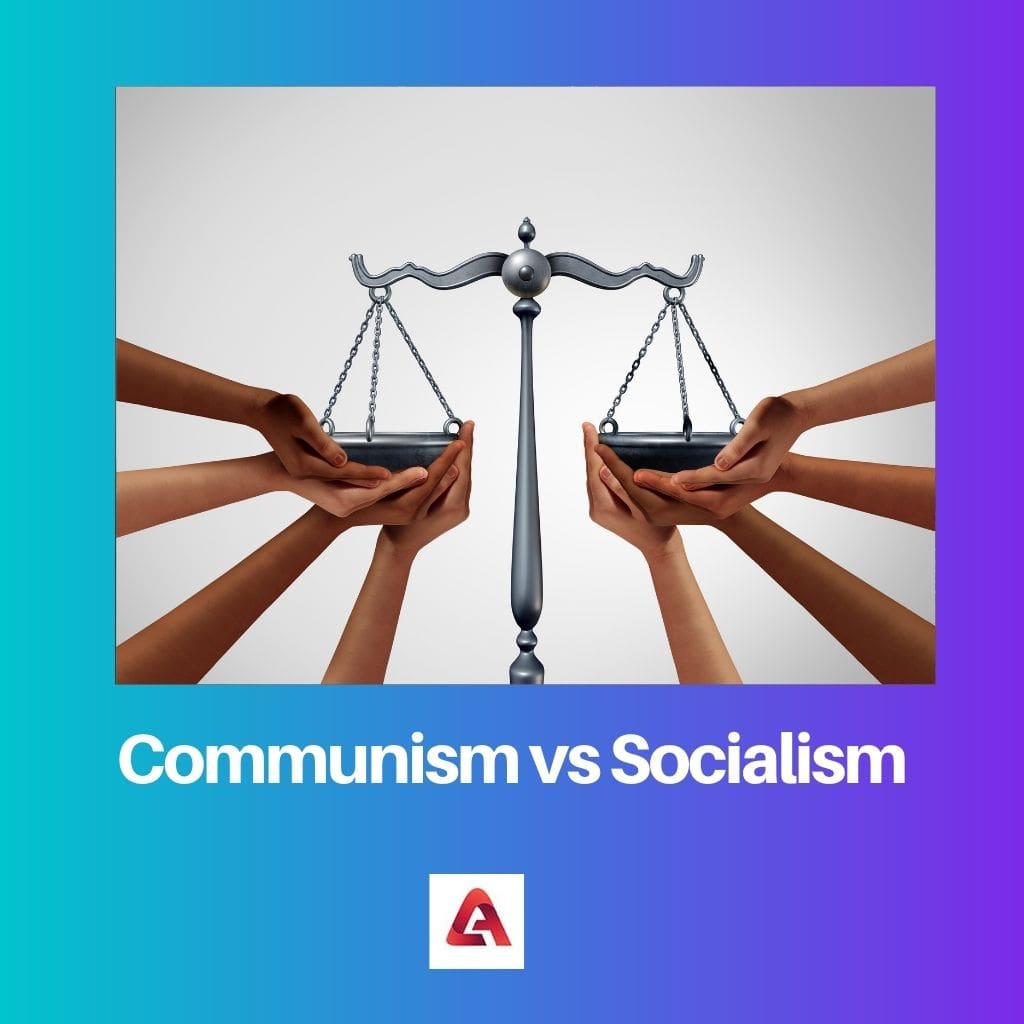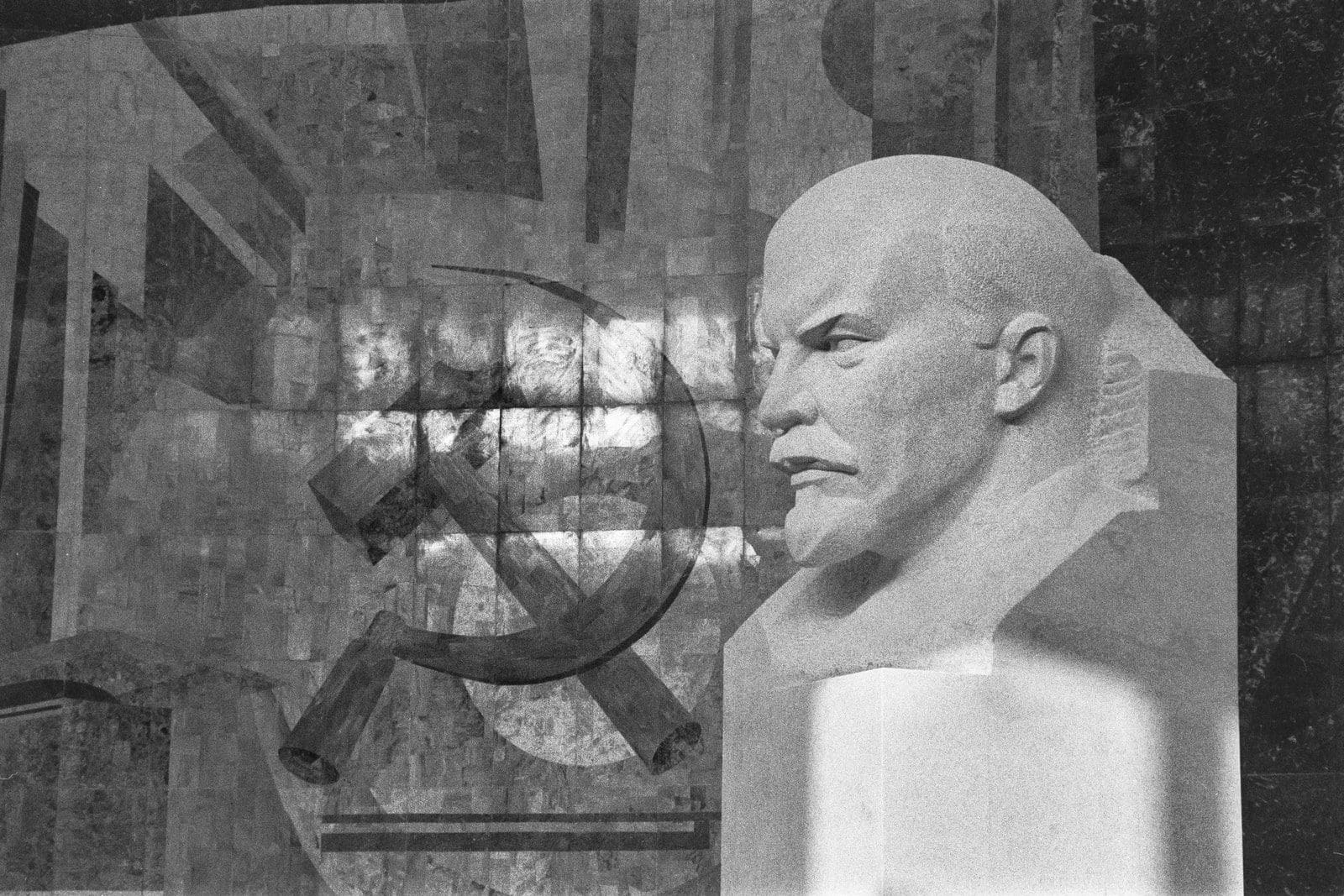Communism advocates for a classless, stateless society with collective ownership of means of production. At the same time, socialism allows for individual ownership and a state to manage the economy for greater societal benefit.
Key Takeaways
- Communism is a political and economic system in which the means of production and distribution are owned and controlled by the community.
- Socialism is a political and economic system in which the means of production and distribution are collectively owned and controlled by the state or the people.
- Communism is characterized by the absence of private property and the equal distribution of resources, while socialism allows for personal property and market mechanisms to a certain extent.
Communism vs Socialism
Communism is a political and economic system in which the means of production. Socialism is a political and economic system in which the means of production are owned and controlled by the community. In communism, the state has total control over the economy and society, unlike in socialism.

In a communist state, it doesn’t matter how hard you work; you will get the same portion you are getting, which stops the ability to work harder and better. But in socialism, citizens can own their personal properties, but the major means of generating wealth will be under an elected government.
In socialism, citizens can play their role in the government, and the government is not involved in every aspect of the field. Citizens get necessities according to their contribution and ability in society.
In a socialist state, it does matter how hard you work because without working hard, you will not get anything in this, and it motivates people to excel in their field.
Comparison Table
| Feature | Communism | Socialism |
|---|---|---|
| Economic System | Centrally planned, state-owned economy with no private property. | Mixed economy with varying degrees of state ownership and private ownership. |
| Means of Production | Controlled by the government or state. | Can be owned by the government, cooperatives, or individuals. |
| Distribution of Wealth | Aims for an egalitarian society with no class divisions or economic inequality. | Aims for a more equitable distribution of wealth than capitalism, but may still have some level of inequality. |
| Social Welfare | Provides universal social services such as healthcare, education, and housing. | May provide some social services, but may also rely on private markets to deliver some services. |
| Political System | Typically one-party state with limited individual freedoms. | Can be a one-party state, multi-party state, or a democracy with socialist policies. |
| Incentives | Focused on collective goals and social welfare rather than individual profit. | May offer some incentives for individual achievement, but also emphasizes collective goals and social welfare. |
| Historical Examples | Soviet Union, China, Cuba, North Korea. | Sweden, Norway, Denmark, Finland, Canada. |
What is Communism?
Communism is a complex and multifaceted concept with varying interpretations and implementations across time and place. Here’s a concise breakdown of its key features:
Economic System:
- Centralized planning: Government controls and directs the economy, including production, distribution, and pricing.
- No private property: Means of production (factories, land, resources) are owned and managed by the state, eliminating private ownership and profit motive.
- Egalitarian distribution: Aims for a society with no class divisions or economic inequality, where wealth is distributed according to need.
Social and Political System:
- State control: Strong central government with limited individual liberties, prioritizing the collective good over individual freedoms.
- Social welfare: Provides universal access to essential services like healthcare, education, and housing.
- One-party state: Historically, communist states have been ruled by single-party governments with limited political participation.
Motivation and Incentives:
- Collective goals: Prioritizes collective well-being and social progress over individual achievement and material gain.
- Social responsibility: Individuals are expected to contribute to society based on their abilities and receive benefits according to their needs.
- Altruistic values: Emphasizes cooperation, solidarity, and equality over competition and self-interest.
Historical Examples:
- Soviet Union (1922-1991)
- People’s Republic of China (1949-present)
- Cuba (1959-present)
- North Korea (1948-present)
Criticisms:
- Lack of individual freedoms and economic incentives can stifle innovation and economic growth.
- Central planning can be inefficient and prone to corruption.
- Historical implementations of communism have been associated with authoritarian rule and human rights abuses.
It’s important to note that communism is not a monolithic entity. There have been various interpretations and implementations throughout history, and some forms of communism have advocated for more democratic and decentralized approaches. Additionally, the failures of some communist states should not be seen as definitive proof of the inherent flaws of the ideology itself.

What is Socialism?
Socialism is a broad political and economic philosophy encompassing various systems that advocate for a more equitable distribution of wealth and social justice. Here’s a breakdown of its key characteristics:
Economic System:
- Mixed economy: Combines elements of both capitalism and state intervention. The extent of government involvement varies depending on the specific ideology.
- Social ownership of means of production: Means of production can be owned by the state, cooperatives, public-private partnerships, or individuals. Private ownership is permitted, but regulated to prevent excessive concentration of wealth and ensure fair competition.
- Market mechanisms: Markets play a role in allocating goods and services, but are regulated to ensure social justice and prevent exploitation.
- Progressive taxation: Higher taxes are imposed on the wealthy to generate revenue for social programs and infrastructure development.
Social and Political System:
- Social welfare: Provides universal access to basic necessities like healthcare, education, and housing.
- Democratization of the economy: Workers have greater control over their workplaces and participate in decision-making.
- Social equality: Strives for greater equality in terms of income, wealth, and social opportunities.
- Political pluralism: Range of political parties and ideologies are allowed to participate in the democratic process.
Motivation and Incentives:
- Social justice: Aims to create a fairer and more equitable society where everyone has equal opportunities to thrive.
- Social solidarity: Encourages cooperation and mutual support between individuals and groups.
- Democratic values: Upholds principles of democracy, participation, and individual rights.
Historical Examples:
- Sweden
- Norway
- Denmark
- Finland
- Canada
- Israel
- Kibbutz movement
Criticisms:
- Can lead to economic stagnation due to overregulation and stifling of innovation.
- Balancing social welfare with economic efficiency can be challenging.
- Different interpretations of socialism can lead to differing outcomes and implementation challenges.

Main Differences Between Communism and Socialism
- Ownership and Control:
- Communism: In communism, all property and the means of production are owned collectively by the community or state. There is no private ownership, and resources are distributed based on need.
- Socialism: In socialism, there is a mix of public and private ownership. While certain key industries and resources may be publicly owned or controlled, private ownership of property and businesses may still exist, but with regulations and government intervention to ensure equitable distribution.
- Economic Equality:
- Communism: Communism aims for complete economic equality, where everyone has the same access to resources and wealth is distributed based on need. There is no social class distinction.
- Socialism: Socialism seeks to reduce economic inequality through progressive taxation and wealth redistribution policies. While not all wealth is equalized, there is a focus on providing social safety nets and addressing poverty.
- Role of the State:
- Communism: In communism, the state plays a significant role in planning and controlling the economy, with central planning and strict government control over all aspects of society.
- Socialism: Socialism allows for greater economic freedom and private enterprise compared to communism. The state’s role is to regulate and manage certain sectors and ensure social welfare.
- Transition to Communism:
- Communism: Communism is seen as a final stage where the state has withered away, and true equality and communism have been achieved. This is envisioned as a classless society.
- Socialism: Socialism is considered a transitional phase towards communism. It is seen as a way to address immediate economic and social inequalities on the path to a classless society.
- Incentives and Motivation:
- Communism: Communism relies on the motivation of individuals to work for the collective good rather than personal gain. In theory, individuals are expected to contribute according to their abilities.
- Socialism: Socialism retains some elements of individual motivation and personal gain within a regulated framework. Incentives to work and innovate may exist, but there are limits on wealth accumulation.
- Political System:
- Communism: Communism leads to a single-party system or authoritarian rule, where the state has significant control over all aspects of life.
- Socialism: Socialism can be implemented within various political systems, including multi-party democracies, and it does not necessarily require authoritarian rule.
- Examples:
- Communism: Historical examples include the Soviet Union under Lenin and Stalin and Maoist China. Contemporary examples are limited, with some countries claiming to be communist but diverging from communist ideals.
- Socialism: Examples of socialist countries include Sweden, Norway, and Denmark, which have mixed-market economies and robust social welfare systems.

The breakdown of the economic and social system of both communism and socialism is clearly presented. It helps in understanding the core principles and differences between the two systems.
I concur, William84. The detailed comparison of their economic and social aspects enhances the clarity of understanding.
A well-structured and comprehensive overview of communism and socialism. The breakdown of their economic, social, and political aspects provides a clear understanding of their fundamental differences.
The article delves into the nuances and intricacies of communism and socialism, offering a comprehensive understanding of their economic, social, and political dimensions. It’s a valuable resource for anyone seeking to comprehend the complexities of these systems.
Absolutely agree, Qwright. The article offers an in-depth and insightful analysis of communism and socialism.
I beg to differ, Qwright. The article lacks a critical analysis and tends to idealize these systems without addressing their practical challenges adequately.
The article provides a well-researched and comprehensive overview of communism and socialism. It effectively covers the key characteristics, historical examples, criticisms, and underlying principles of these systems.
Absolutely, Rose Wayne. The depth of analysis and presentation of information is indeed commendable.
I found the article somewhat repetitive and overly detailed. It could have been more concise and focused on the essentials.
This article fails to acknowledge the shortcomings of communism and paints a rather rosy picture. It should have emphasized more on the potential flaws and challenges associated with these systems.
I disagree, Idavies. The criticisms section was sufficient, and the focus was rightly on highlighting the positive aspects of both communism and socialism.
I second that, Idavies. The criticisms section could have been more comprehensive.
The critical analysis of the historical examples and criticisms provides a deeper insight into the practical implications of communism and socialism. It helps in understanding the real-world challenges associated with these systems.
I disagree, Rogers Darren. The article should have focused more on the theoretical aspects and the underlying principles of communism and socialism.
Absolutely, Rogers Darren. The historical context and criticisms highlight the complexities and practical limitations of these ideologies.
The comparison table was particularly helpful in understanding the key differences between communism and socialism. It’s a great reference for anyone trying to grasp the nuances of these systems.
I couldn’t agree more, Edwards Ellie. The table provides a clear and structured comparison that makes it easy to differentiate between the two.
I didn’t find the table very beneficial or informative. It merely restates the information from the main text.
The article seems to be biased towards socialism, with a more positive tone towards it. It would have been better to present a more balanced view of both systems.
I understand your concern, Turner Wayne. A more neutral stance would have been preferable to avoid any perceived bias.
Very informative and well-structured explanation of the differences between communism and socialism. It provides a clear understanding of both systems in a concise manner, making it easier to grasp their nuances.
I agree, Ithomas. The breakdown of historical examples and criticisms is particularly enlightening.
It’s evident that the article leans more towards defending socialism, while downplaying the challenges of communism. It lacks objectivity in its portrayal of these systems.
I completely agree, Zholmes. The article should have strived for a more neutral and objective standpoint.